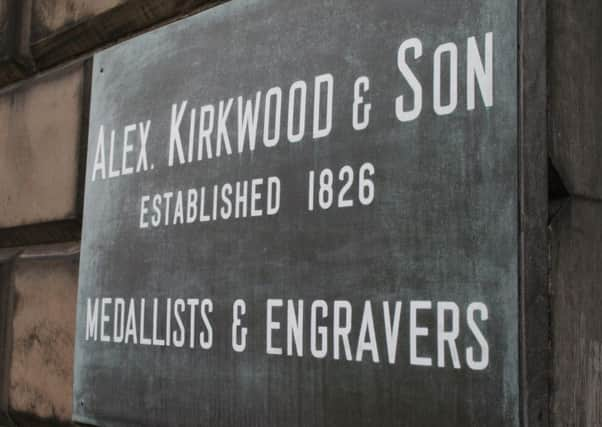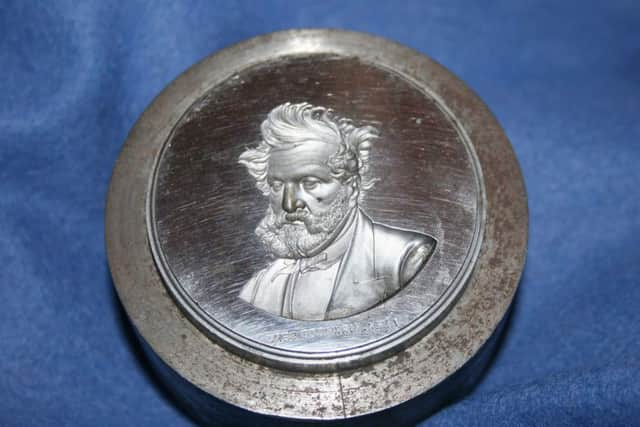Family-run medallist Alexander Kirkwood making its mark
This article contains affiliate links. We may earn a small commission on items purchased through this article, but that does not affect our editorial judgement.


In the magnificent St Giles’ Cathedral on the Royal Mile in Edinburgh is the Thistle Chapel, chapel of the Most Ancient and Most Noble Order of the Thistle, the greatest order of chivalry in Scotland.
Each member of the Order is allotted a stall in the chapel and when a new knight is appointed by the Monarch a stall plate is installed, carrying the crest of the new knight. The crest plates are handcrafted by Alexander Kirkwood & Son, Scotland’s last remaining medallist, a deeply historic Scottish business, now more than 190 years old.
Advertisement
Hide AdAdvertisement
Hide AdEstablished in 1826, the history of the firm goes back even further, to 1774, when the craftsmanship and skill of James Kirkwood’s hand engravings were noticed by Sir William Forbes, head of an Edinburgh bank. Sir William subsequently commissioned Kirkwood to produce the metal plates required for the manufacture of banknotes.


The Forbes Bank later merged to found the Union Bank of Scotland in 1830. James Kirkwood’s son Robert went on to become a renowned engraver of the plates required for banknotes, pictures, maps and geographical globes.
The skills required to engrave the designs on flat copper and steel plates were passed from generation to generation and were similar to those of a medal die-cutter. It was in this way that Robert’s son Alexander eventually founded the company as it is today, becoming one of the finest die cutters in Scotland.
Alexander Kirkwood & Son is now one of Scotland’s oldest family-run businesses and continues its trade as a medallist, silversmith, engraver and trophy maker to some of the world’s most famous and celebrated institutions and organisations. Over the two centuries, the business has continued to make dies and then strike medals for some of the rarest and greatest medals ever produced.


Two of the most famous dies are the solid silver dies created for the seal for stamping the Great Seal of Scotland. The Seal is attached to official documents to confer royal assent by the reigning Monarch and is believed to date back to 1094.
The design of the Great Seal of Scotland is the responsibility of the Lord Lyon King of Arms. The reverse of the Seal shows the monarch on horseback, but it is not changed from reign to reign and the current version is that produced by Alexander Kirkwood & Son in 1911 for the accession of King George V.
Advertisement
Hide AdAdvertisement
Hide AdAlexander Kirkwood & Son also created the prestigious “Livingstone Medal”, awarded by the Royal Scottish Geographical Society in recognition of “outstanding public service in which geography has played an important part, either by exploration, by administration, or in other directions where its principles have been applied to the benefit of the human race”.
Designed by the renowned sculptor James Pittendrigh MacGillivray, it bears on the obverse side a portrait of the great explorer, and on the reverse an allegorical representation of the Spirit of Civilisation bearing the torch of progress and the olive-branch of peace.
Alexander Kirkwood & Son created the dies from this design and have struck the medals since the award’s inception.
Sir Harry Johnston, a British explorer, botanist and zoologist was the first recipient of the medal in 1901. Over the years, others have included Sir Edmund Hillary, Sir Ranulph Fiennes, HRH The Duke of Edinburgh, Michael Palin and Sir David Attenborough.
More recent medals include The Edinburgh Medal, struck in silver and awarded by the City of Edinburgh to an individual who has contributed greatly within the world of science and the St Andrew’s Award Medal, celebrating acts of bravery in Scotland.
David Kirkwood is the current proprietor of Alexander Kirkwood & Son and the fifth generation to manage the business. He says: “We want to continue to help to record moments of history through medals and ensure that this craft is maintained within Scotland.”
That ambition looks set as the business maintains a strong trade in medals for high profile universities, societies, institutions, golf clubs and sports clubs. Alexander Kirkwood & Son holds a unique place in Scotland’s history and a medal from this historic business is one of the ultimate and most prestigious signs of quality craftsmanship.